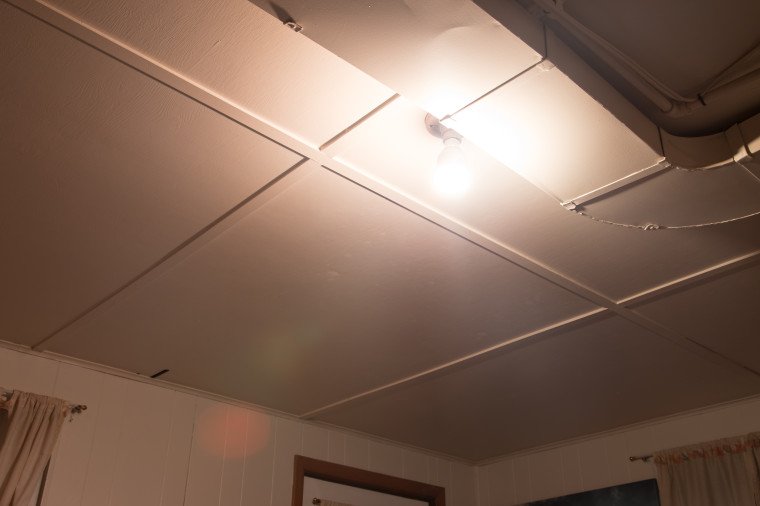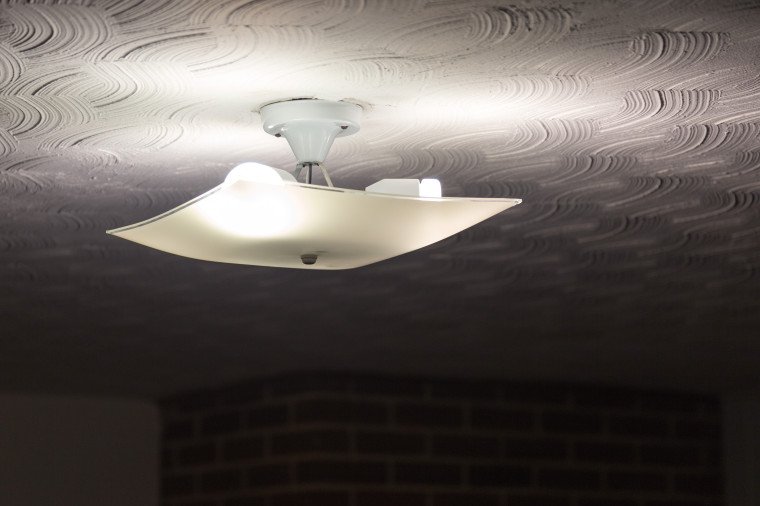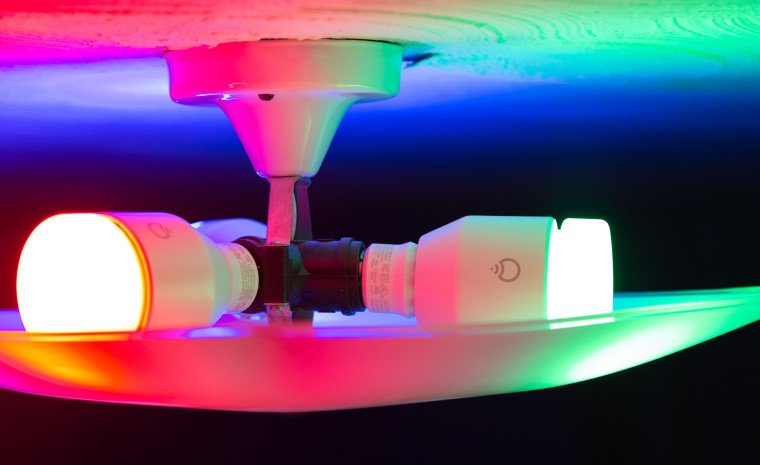Everything is getting smarter in the house, well now we finally have a smart lightbulb. The LIFX lightbulb originally started on Kickstarter over a year ago destroying their goal of $100,000 with over a million dollars from backers.
My four “Kickstarter” edition LIFX lights showed up in December of 2013 right when I took them out of the box I was surprised how large they were but it makes sense due to all the tech involved. They fit in regular light sockets as expected and immediately I was impressed how bright and clean the light was. The lights in my room had a typical yellowish tint so seeing such white light was refreshing.
Setting LIFX lights up was incredibly easy, screw the light in and open the app on your phone and it walks you though the setup which was basically connecting to their wifi network. Even without setup these lights will work as normal bulbs and turn off/on with a switch of the light switch. In order turn the lights off/on from your phone your light switch must be in the on position, so if someone in your home doesn’t have a smartphone or uses switches it can cause issues.
According to LIFX’s specs they clock in at 1000 lumens which is super bright and exactly what I’d want from a light. One of my biggest concerns was that it wouldn’t be bright enough but they exceeded my expectations. LIFX lights can be turned off/on with a phone app, including changing light color and brightness. The colors that these lights produce are impressive but quickly after changing the color a few times I realized, why would I ever want a red/blue/green room? and somewhat makes the feature pointless unless you’re using them as accent lights.
Speaking of the LIFX iPhone app for bulbs, I expected way more. As of writing this review (December 18th 2013) the basic functions of the app include grouping lights, brightness, color, on/off, and “scenes”. Scenes allow you to save a light setup so for example you can make all of your lights dim blue and save the scene as “blue” then go back to white lights and quickly go to your “blue” settings. Some of the lacking features that I expected include lights flashing from notifications and waking lights when connecting to my wifi network. I’m sure these features are coming but it’s a bit disappointing especially after waiting a year.
[justified_image_grid ids=”965,968,969″]
Overall the light quality is fantastic and that’s all you can ask for right now since they are new to the market. You also don’t need a “hub” box like the Philip’s Hue lights require but this comes at a higher cost per bulb (Hue ~$55 vs LIFX’s ~$85). Philip’s Hue lights have support for IFTTT which creates almost unlimited options for their bulbs and I’m expecting LIFX support soon but it currently isn’t there. If LIFX or someone else makes a better app for these bulbs (which is bound to happen) I’ll most likely order more but at their current state four is enough for my home.
Sample Video
Here is a quick video of the color ranges of the LIFX bulb.
Update 1/27/14 Music Visualizer Test
Looks like LIFX added a music visualizer, it appears to use the microphone on your phone and you have to keep the app open (at least on iPhone) for it to work.
LIFX Bulb vs. GE 60 Watt ‘Reveal’ Bulb
For these tests I made sure the white balance and camera settings stayed the same for each shot. From what I could tell the LIFX bulb was slightly brighter than the GE 60w bulb, but keep in mind the bigger lifx bulb pops out a bit more.


And here’s a few colors on the LIFX Bulb in the same scene.
[justified_image_grid ids=”1011,1013,1019″ row_height=200]
The LIFX bulb is the perfect addition to any smart home especially with it’s new HomeKit functionality.



Philips Hue seems like the better choice to me.
They are much smaller, omni-directional, has more features, vast developer support and much cheaper.
Other than being a Kickstarter darling, what does LIFX do better?
Philips Hue also requires a separate wifi hub and isn’t as bright. There are tradeoffs for both, but with LIFX’s released API and imminent IFTTT support things are about to level off on the developer side.
Hue also draw only 8.5 watts maximum and run cool (better for my small kitchen). The only relative drawback I see is Hue is only 600 lumens (or 630 for the BR30s) and LIFX is 1000, nuch brighter (though LIFX draws 2x the wattage). Hue also has more options for bulbs (A19, Br30 and GU10 in Europe which I assume will eventually be made available in the US) and coming this summer a physical switch to control them which will make them that much more useful because when I want to go to the bathroom at night I don’t want to deal with my damn phone !